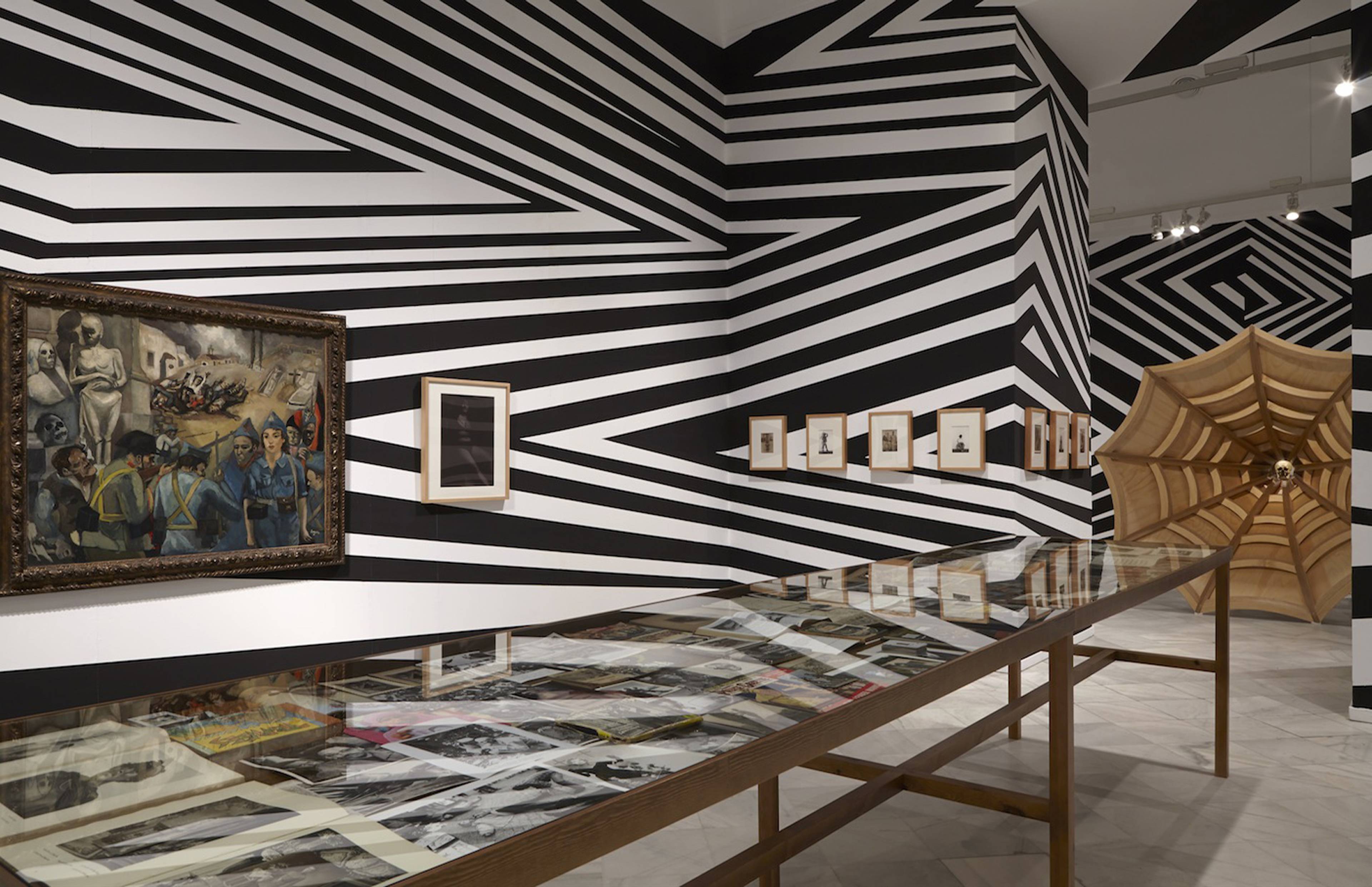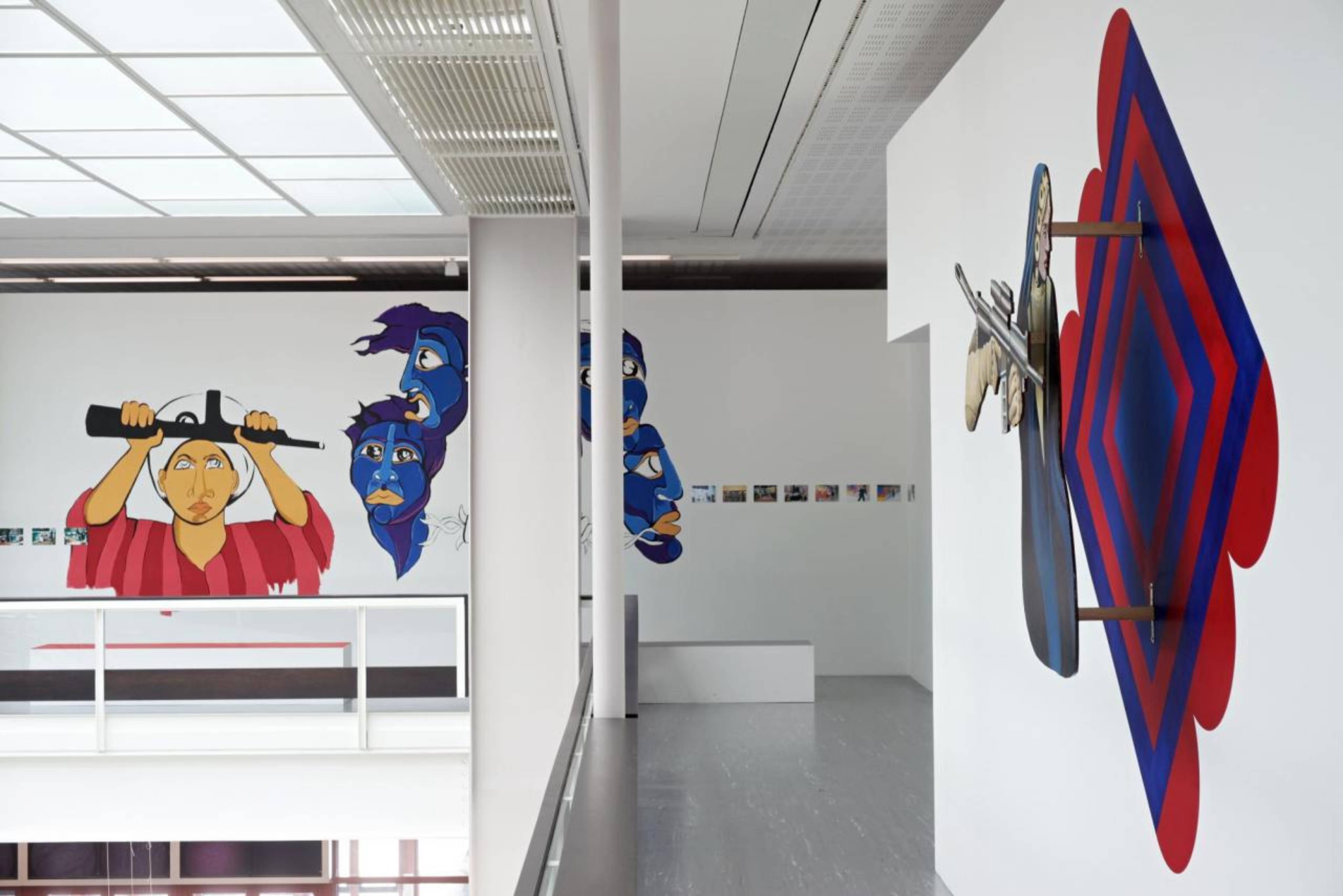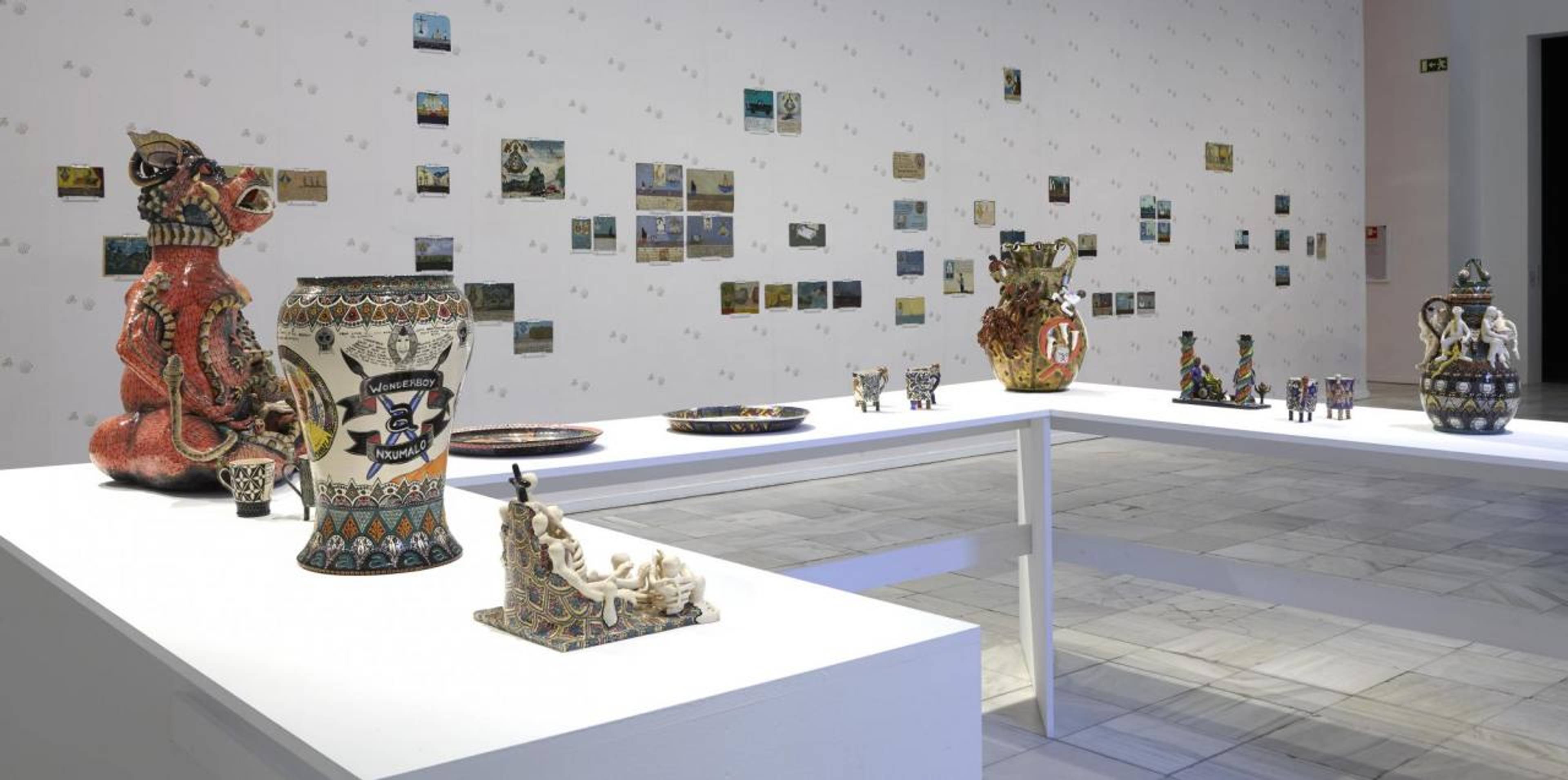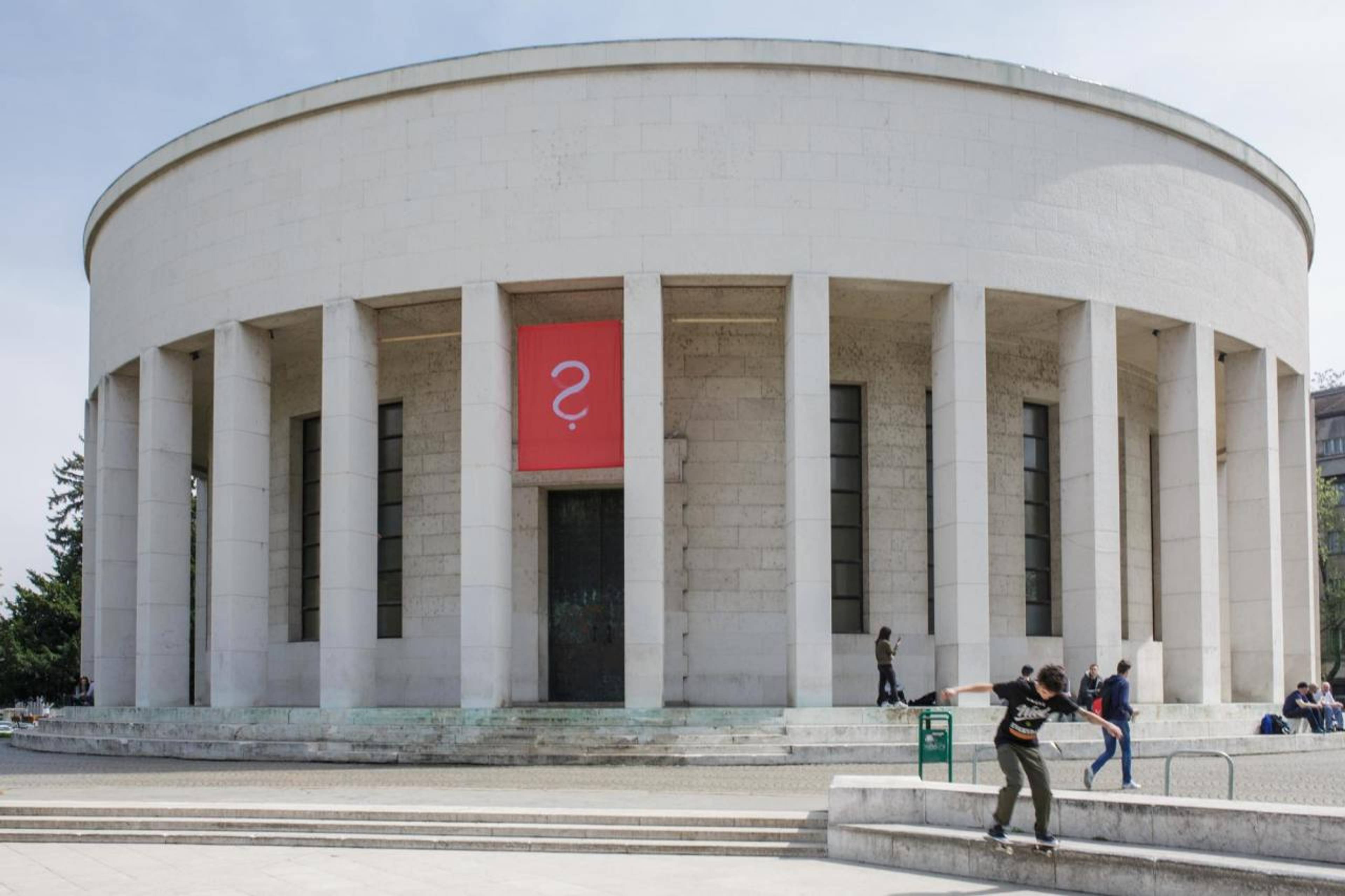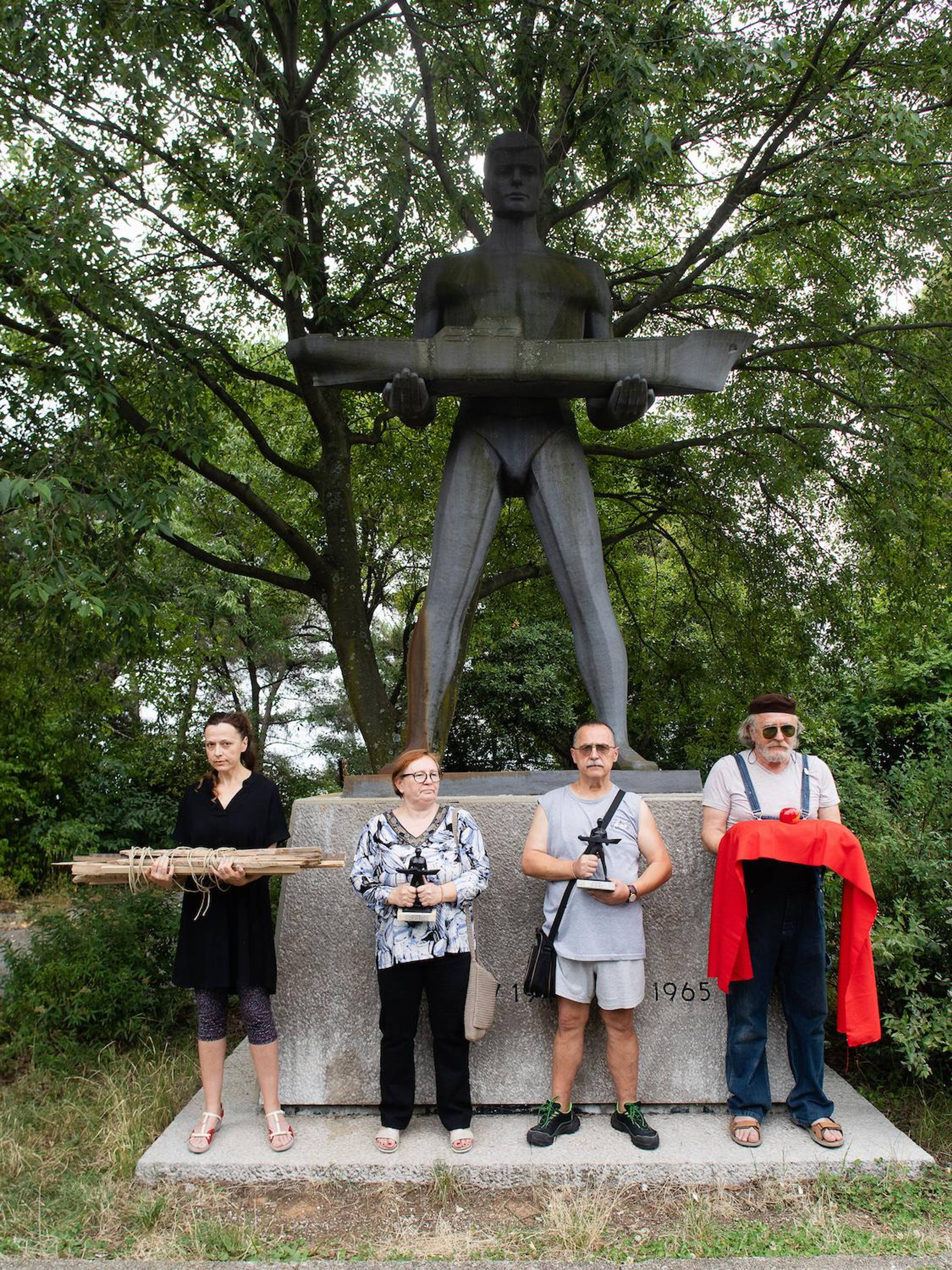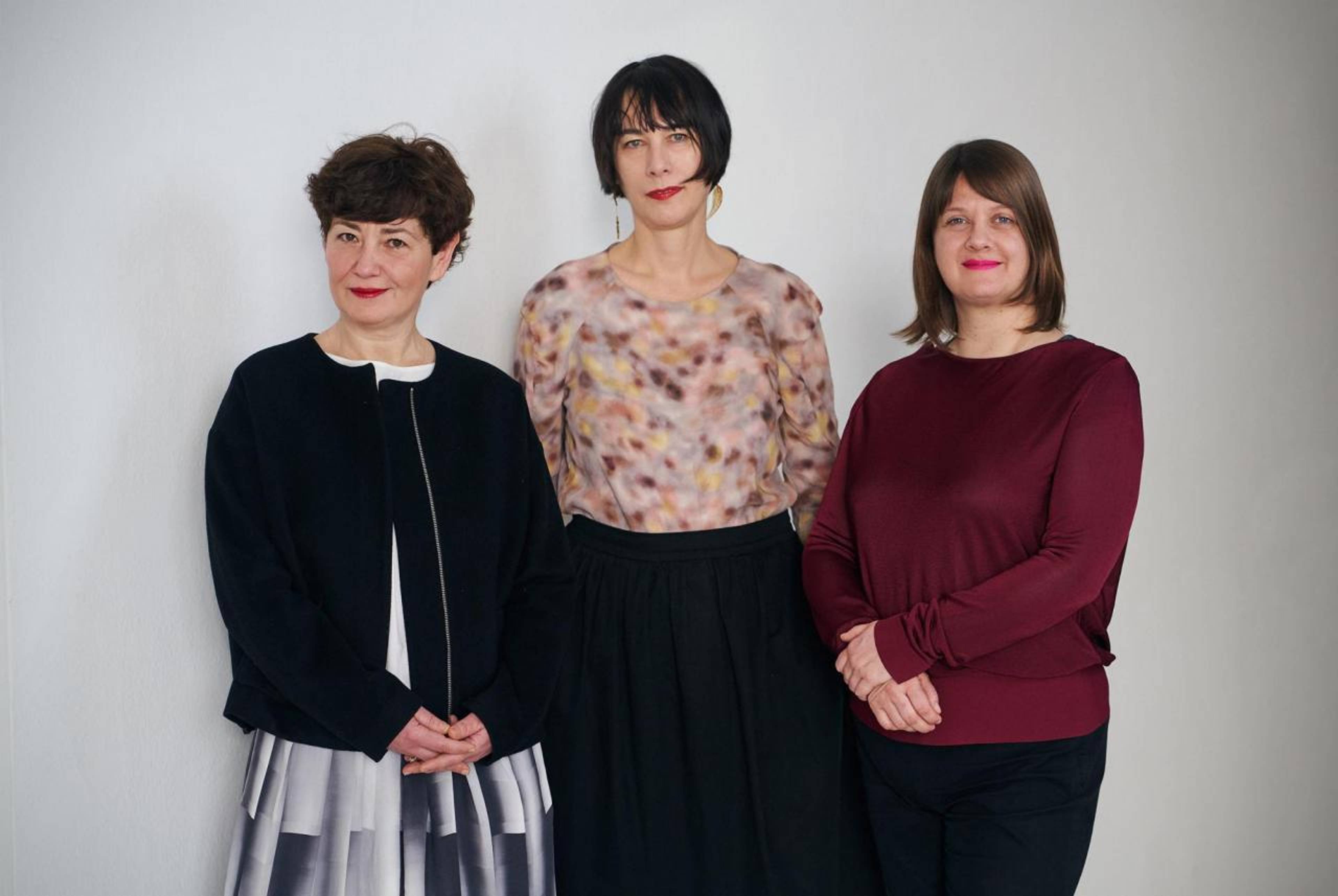After 20 years with Zagreb as their home base, Ivet Ćurlin, Nataša Ilić and Sabina Sabolović have been appointed to direct Kunsthalle Wien. When former director Nicolaus Schafhausen resigned from his job last year, citing personal reasons and the political climate in Austria among his reasons, the call for applications explicitly invited collectives to apply for his job and WHW’s application was chosen.
This will be the first time a collective will direct an art institution of this size. Starting on June 17, 2019, Ivet Ćurlin, Nataša Ilić and Sabina Sabolović will thus be working between Vienna and their hometown, while Ana Dević will continue to be based in Zagreb to run WHW’s space Galerija Nova and the other public programs there. Wanting to know more about the way WHW's practice developed and evolved over twenty years and how they approach the challenge of becoming institutionalized and managing an organization with 40 employees, Klaus Speidel spoke with Ćurlin, Ilić, and Sabolović.
Klaus Speidel: Let’s start with a very fundamental question: You have the What, How and for Whom in your name, but how about the why: Why curate? Why curate rather than write, for instance?
What, How & for Whom: This question has a lot to do with when we started in Zagreb, in the nineties, when we were surrounded with nationalism, xenophobia, and amnesia about anything connected to socialism and Yugoslavia. In the post-war atmosphere of Yugoslavia’s breakup, these were occupying the public space, the media, and the institutional production of knowledge. At that time curating felt like a way to engage with politics and the social context. Croatia had – and sadly mostly still has – quite a conservative art history and we were not educated as curators, but we felt that the exhibition format had a potential to build a public space, almost using the pretext of cultural production to discuss politics. This approach was the initial spark for our first project.
The platform Arkzin had republished The Communist Manifesto with a preface by Slavoj Žižek, and even though Žižek was already an intellectual star, there was no public reaction to the publication. It was like the book never happened. Then Arkzin had the idea to test and see if an exhibition could be a public platform for discussing the book and they invited us to do it, which resulted in our first exhibition, “What, How and for Whom, on the 152nd anniversary of Communist Manifesto,” in 2000 in Zagreb. We were then invited by Hedwig Saxenhuber to show the exhibition at Kunsthalle Exnergasse in the WUK Wekstätten- und Kulturhaus in Vienna in 2001 and this was our first international opportunity.
How to do exhibitions critically, in a self-reflective and engaging way, and preserve them as an important cultural format is still a concern for us, but we also want to simply say that we like exhibitions. They are a bodily and sensual as well as an intellectual experience that we appreciate, and we feel that it is a precious experience in this moment of so many horizons around us being closed. And of course, making exhibitions involves working closely with artists, which we think is a privilege, as we always learn a lot from them.
Meeting Points 7: Ten thousand wiles and a hundred thousand tricks (Rajkamal Kahlon, Darinka Pop – Mitić), Wiener Festwochen in collaboration with 21er Haus, Vienna, 2014
KS: I’d like to hear a bit more about how the vision has evolved for you. Would you say the core is still the same? What are the major changes in the way you conceive an exhibition today?
WHW: What has remained is the idea that an exhibition means constructing a public space rather than just being a public space. The idea of an exhibition as an intervention is also still something important. But the biggest change is probably that we don’t demand – from the exhibition, from the artists, or from ourselves – that such an intervention has a direct political impact. Our conception of the autonomy of art has changed over the years. Nowadays art is under such pressure and instrumentalized from all sides, and in this context the meaning of “autonomy” becomes urgently important. An exhibition is not only a space for political intervention. It can also be a place to just get together, a place of discussing art, and a place of simply enjoying art – and this is fine and important too.
Another change is that when we started, we really thought of exhibitions as a political tool, so a certain sharpness and loudness in our language and approach was really important. We wanted to break a kind of silence and we felt we should be blunt about that. Now, twenty years later, we are wondering what we achieved. Artist Mladen Stilinović says that “art always has its consequences”; it is hard to articulate the changes and the question of consequences is a complex one, but the fact that we are interrogating the way we curate is important for us. We are open to rethinking our language and goals on all levels, and this is a slow and open-ended process in which new questions constantly emerge.
KS: Let’s talk about the Kunsthalle engagement more concretely: Do you see it as the “next” step, just “another” step, or a new adventure? How do you see this engagement in relationship to what you’ve done before?
WHW: Of course it is a change in many ways. For twenty years our work has been based in Zagreb, which meant dealing with its context, including its cultural policies and the very precarious working conditions. We think it is really precious and important that Vienna has this institution, which is city-owned, and that there is a willingness and awareness from the side of cultural policy makers to keep this institution stable, with good working conditions for the artists and for the team. This means that we can think together with people over a longer period of time and that element of continuity, of a certain slowness – not to be mixed up with institutional inertia – is precious to us. Within the realities of the reactionary politics which we are witnessing everywhere in Europe now, spaces of production of contemporary art are especially in danger. Museums with heritage collections probably get hit a bit later, but you can really see that places showing and producing new works and content are having a hard time.
What we find challenging is the fact that though we’ve done many international projects, Zagreb was always central for our thinking, in a sense that its specificities were a kind of lens through which we were looking at other places, thinking through how to relate to them. Zagreb was a kind of symptom whose deeper causes could be translated to other contexts, with their own specific conditions and issues. Now, having a contract for running the Kunsthalle for five years, we feel that Vienna also becomes a point for our thinking. We need to see the city anew and talk to people and scan and analyze and understand where we are – but of course, that doesn’t mean we are deleting our twenty years of experience in Zagreb and elsewhere. Although we’ve worked in Vienna a lot and have had a lot of exchange, it will be interesting to learn about the city from a new perspective. We would like to find a way to create a program which matches our specific point of view, but also matters locally. We also want to enter an institution without entirely identifying with it but still acknowledge that we are really not an outsider anymore and are in a position of high responsibility and visibility. There is, of course, a big change in our collective dynamics; we are now looking for ways to keep the collective alive not just nominally but also practically, given that Ana is staying in Zagreb and we will also continue working in Zagreb as we move to Vienna.
Really Useful Knowledge (Ardmore Ceramic Art, Runo Lagomarsino), Museo Reina Sofia, Madrid, 2014. Photo: Joaquín Cortés & Román Lores / M.N.C.A.R.S
KS: When there is a change of direction anywhere, people often start with some symbolic gestures, like changing the office spaces or the visual identity. Is something like this on your mind?
WHW: We are thinking about it, but it’s a bit early for us to say. We are interested in rethinking the visual identity, and the entrance to the exhibition space too. This is something very expected, but we hope it can be more than just a gesture. There is a holistic element linked to the fact that we want to adapt the communication or the space not only to ourselves but also to the kind of practices and artists that we want to work with. We’d like to think that these things don’t come only as signs of power or a public signature, but also as expressions of what we think the institution should be, what our concerns are. We are also interested in trying to find ways to work slowly and more organically, to test and discuss and give things a chance.
KS: That’s a good point. I think communications can and should be something that has a deeper meaning. Something that perhaps links to this – and for me was one of the more interesting reflections that appeared when Nicolaus Schafhausen left – is about the space of the Kunsthalle, where it is and if it’s a problem to have this old-style facade.
WHW: We are potentially interested in changing the façade, but it certainly isn’t our main priority. We get this question a lot and we don’t want to get sucked in this debate over location of the Kunsthalle. It is an old debate and we don’t think it is so urgent. We first want to experiment with this space. Is it ideal? No, but what space is ideal? And yes, there is a problem – with the entrance more than the façade. It’s not even obvious that a Kunsthalle is there at all. We think every space has potential if we manage to build relations to it.
KS: This relates more generally to the symbolism of an institution. If you do a project with one, there is not so much intertwinement of your own identity with the institution. As you enter the Kunsthalle, you enter an institution which already has a strong identity in people’s mind, people think they know what the Kunsthalle is. But then there is also the identity of WHW. Are you consciously designing the interaction of these two identities or are you diving into it head-on?
WHW: It’s both. We are diving into it and seeing what it is, but we are also carefully trying to design a structure that will keep us rooted in Zagreb and Vienna at the same time. We do not know yet how this will work, but it is a conscious intent. We also feel involved in an important institutional experiment, since as far as we know no institution of this size has been directed by a collective before. We want to be attentive to what that means.
But perhaps your question was also more about how much the Kunsthalle will become WHW, and how much WHW will become the Kunsthalle. We are curious about this too, and hope it works in a two-directional flow that is productive and worthwhile not only for us.
Julius Koller, Question mark Cultural Situation, (U.F.O), 1992. Installation view, “My Sweet Little Lamb (Everything we see could also be otherwise),” curated by WHW in collaboration with Kathrin Rhomberg, Croatian Association of Artists, Zagreb, 2017 Photo: Damir Žižić
KS: I’d also like to know how you relate to the official discourse. Reading through the articles that appeared after you were named directors, I realised that one concrete mission you were officially given by the city was to increase the number of visitors and engage different publics. How do you see this? Is it just a kind of institutional pressure or can it be more?
WHW: Let’s say that it is a good coincidence that we also think the Kunsthalle should engage more constituencies and various publics. It’s just that we don’t think this necessarily translates into visitor numbers; it’s more about relations and exchanges and opening itself to those we don’t know yet. We do think that the Kunsthalle has a lot to offer and we hope that together with the artists it can branch out. But we don’t want this pressure about visitor numbers to be the imposed measure of impact. We need to have a more serious conversation about what the institutional responsibilities are.
KS: To be honest, I somehow felt obliged to ask this in terms of visitor numbers, because it was the most concrete demand placed on the new team. But maybe the more interesting question encroached in this is really how to lower the barrier for entry to contemporary art. When I was curating exhibitions in Paris, I always struggled with this. When I sat in an exhibition and saw people look shyly through the window, I would often stand up, go out onto the street like a salesman in a bazar, and invite them in. Most of the time they were quite happy about this and sometimes came back afterwards. You can’t do this at the Kunsthalle of course, but what will be some of your strategies for moving in this direction?
WHW: We want to run a hospitable institution, but at the same time we want to engage with art that is difficult and demanding, art that is thoughtful, rich, and full of contractions. We are not at all underestimating our audience in Vienna, just as we were not in Zagreb. We don’t want to assume that people don’t want to hear uneasy things and not engage. We also want to put extra effort into mediating what we do, and we would like to involve artists in that process. This is also one of the pressures of the way contemporary institutions are run: Every exhibition has to be a success. But if you want to try out new approaches and test things, all projects might not be equally well received. You have to give yourself some room for failure, to not be understood every time.
We are happy that we have conditions in which we can work more slowly than we do in Zagreb or when we are invited for a one-off project at an institution. Having a more stable engagement, we can allow for more experimentation. As it’s such a big institution, with many layers and different things going on in parallel, we also feel like we can combine the levels and not only do things with high visibility.
Vlatka Horvat, Who Come to Stand, 2018. Performance documentation, “On the Shoulders of Fallen Giants” – The 2nd Industrial Art Biennial, Rijeka. Photo: Hrvoje Skočić
KS: What are some of the tools that have allowed you to engage more people in Zagreb? What have you done to get out of the bubble of contemporary art where everybody is happy if the other contemporary art people like it?
WHW: Since the late 1990s, the independent cultural scene in Zagreb has always been very collaborative and we have been part of it since the beginning. Independent cultural initiatives of different backgrounds collaborated with each other, with universities, with other institutions, with activist organisations, and of course with artists, and this has very much broadened the scope of the audiences. This character of deep collaborations is what we would also like to try out in Vienna, at the level of the Kunsthalle itself. We would like artists to work more directly with different departments so that everything that comes out of the institution is somehow filtered through the artists involved, but also with other cultural, political and civic initiatives in the city.
KS: Another host of questions I have are related to the “machine”: in such a big house, you’ll suddenly have a marketing department and a communications department at your disposal, but they can also streamline things …
WHW: Yes, the very form of organizations shape things. As we said, we would like to find ways to loosen divisions in departments, first of all by involving artists on all levels and by having deeper interdepartmental collaborations, and we hope that some of the skills developed in our collective work can be applied and extended for the whole “machine” of the institution. In our previous work with the institutional machine, for example in Istanbul, we were in the position of outsiders confronting the institution. Now we have to see how to challenge it from the inside. This will for sure be a process that needs time and patience, and we see it as a crucial part of our work.
KS: Something else that relates to that is management. You now have two employees as WHW. At the Kunsthalle you will have thirty-eight. You’ll somehow really become managers. How will you approach this?
WHW: We will have to learn how to work with such a big team and in such a hierarchical situation, but what gives us confidence is that as a collective we did loads of collaborations in different institutional contexts. We are used to thinking together, working things through in a collective manner, and we know how to talk with people and how to listen to them. We hope to incorporate the skills involved in our collective work on all levels of institutional functioning and that they will positively influence the more typical managerial approach.
KS: You mean you would like to work more “horizontally”, as they call it in managerial discourse?
WHW: Well, we really dislike all of this managerial discourse, in which “horizontal” organisation most often means that people are burdened with more responsibility and more communication and more bureaucracy without being paid for this extra work. In managerial discourse, horizontality is first of all about the institution projecting a positive image, not really about the collective decisions. So, no, we do not aim to develop a horizontal system, because in the end it’s never really horizontal. Rather, we want to find ways to motivate people for meaningful and autonomous work. We don’t want the performativity of collective decision-making just to project a more positive image of the institution, but rather to follow a genuine interest in what we can learn from people working in the institution, and what they can also learn from us. That being said, we will be managers as much as necessary, but certainly not more than that.
KS: I have one last question: When Nicolaus Schafhausen announced that he was resigning, he said it was because of the political climate in Austria. How do you see your coming here in this specific political climate?
WHW: Well, we think that the political climate in Vienna is actually better than in three-quarters of Europe. It’s certainly no worse than where we’ve been working for the last twenty years. Vienna is still a city run by a fairly progressive government, in which liberal values are not just stand-ins for liberal policies. We want to see how to engage artistic production and artistic subjectivities in a country that is very polarised, and how to work against this polarisation. We don’t expect an easy ride, but we are ready for this. What is currently going on between Vienna and the rest of the country is not only important for Austria, but also for the rest of Europe. This is an important challenge and struggle, and we are glad to be part of it.
Left to right: Nataša Ilić, Ivet Ćurlin & Sabina Sabolović / WHW. Photo: Damir Žižić


